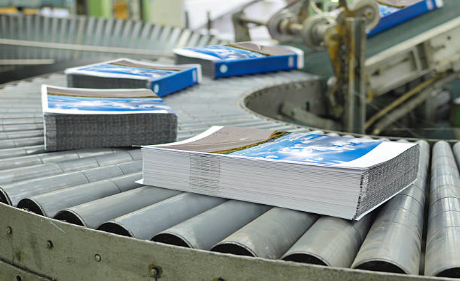
Tips for Choosing Paper for Children’s Board Book Printing
As an author of children’s books, selecting the right paper for your board book printing is one of your most important decisions. The paper impacts everything from the durability and longevity of your book to the visual appeal and tactile experience for young readers. You want a paper that will withstand repeated use and handling, retain color vibrancy over time, and feel pleasant for little hands. However, with so many paper options, determining the best choice for your board book can take time and effort. This article provides tips to help you navigate the options and choose a paper that will do justice to your creative work. You can select a paper that will make your board book a treasured favorite for years by considering weight, texture, color, and environmental impact.
Paper Weight: Heavier Is Better for Board Books
Opting for heavier paper is ideal for a board book printing project. Thicker, sturdier paper, typically 100-lb. text or higher, will hold up better to repeated handling and page-turning by small children.
Heavier paperweights, specifically those classified as “cover stock” or “cardstock,” provide several benefits for board books:
- Durability: Thicker paper is less prone to tearing, wrinkling, or damage, even with rough use. This ensures your board book will have a long lifespan.
- Rigidity:The more substantial paper provides structure and support for the book, allowing it to stand independently without bending or warping. This makes it easier for children to hold and interact with the book.
- Vibrancy: Cover stock paper provides a crisp, smooth surface that allows colors and images to appear more vibrant. This results in higher-quality printing overall.
While cost may be a concern when selecting heavier paperweights, the improved durability and quality are well worth the investment for a children’s book. Choosing the appropriate paper is among the most important decisions in board book printing and manufacturing. Selecting a reputable printer that specializes in high-quality board books for children can also help ensure the best paper and printing for your project.
In summary, opt for the heaviest paper weight for the best results in your board book printing endeavor. Your book will be built to withstand years of enjoyment by little readers.
Paper texture: smooth or rough?
A smooth or rough texture is essential when choosing paper for a children’s board book. The paper texture impacts both the reading experience and printing quality.
For the reading experience, smooth paper with a matte finish is gentler on little hands and less distracting. Rough, bumpy paper can make turning pages difficult for small children, and the uneven surface may be irritating. However, some texture does provide grip to make pages easier to spin. A lightly textured paper strikes a good balance.
In terms of printing, smooth paper provides the best results for color printing and image clarity. The even surface allows for sharp, crisp details in illustrations and photos. Rough paper scatters light, resulting in a grainy, blurred effect. While this artisanal quality may appeal to some books, it reduces print quality.
Paper texture also impacts durability. The smooth, sturdy paper stands up well to repeated reading and handling. Rough, porous paper is more prone to tearing and creasing. For a board book meant to withstand chewing and grabbing, smooth, durable paper is the most suitable choice.
In summary, smooth, matte paper is generally the most appropriate option for a children’s board book. It provides an enjoyable reading experience for little hands, allows for high-quality color printing, and is durable enough to handle the rough play of toddlers and babies. The right paper choice results in a book that both children and parents will love.
Paper Coating: Glossy, Matte, or Uncoated
Glossy Coating
A glossy coating on paper gives it a shiny, reflective sheen. Glossy paper is famous for children’s board books because it helps images and colors pop, attracting young readers. However, the high-gloss finish can show fingerprints and scratches more easily. Glossy paper is also often more expensive to print on. For your custom hardcover book printing, we offer a range of paper options, including glossy paper, to enhance the visual appeal of your books and captivate your audience.
Matte Coating
Matte paper has a dull, non-reflective finish that helps minimize glare. It provides a softer look that can make images appear more natural. Matte paper hides fingerprints and scratches better than glossy paper. However, colors may appear slightly duller on matte paper. Matte coating is often more budget-friendly for printing.
Uncoated Paper
Uncoated paper has no special coating and provides a natural, organic feel. It allows the paper texture to show through, which some find appealing for children’s books. Uncoated paper is very budget-friendly but does not showcase colors and images as vibrant as coated papers. It is also more prone to scuffs, scratches, and stains.
Consider your priorities and budget when selecting a children’s board book paper. The glossy or matte-coated paper will provide an engaging experience for young readers with bright colors and images. Uncoated paper can work well if cost is a concern or you want an all-natural feel. You may also use different paper types for the cover versus the interior pages. Testing paper samples during design can help determine what works best for your book.
Paper Color: White, Cream, or Brights?
Color is essential when choosing paper for a children’s board book. The paper color impacts the overall look and feel of the book and helps set the tone for the story or content. You have a range of choices available:
White Paper
White paper is a classic, neutral choice for most board books. As experienced children’s book printers, we recommend white paper because it provides a clean backdrop for text and images, allowing the content to shine through. White paper is a safe, versatile option if you’re unsure how bold you want to go with the paper color.
Cream Paper
The cream-colored paper has a warm, natural tone that can give a board book a softer, more organic feel. Cream paper pairs nicely with nature-themed content or stories set in rural environments. There may be better choices if you want crisp, bright images to pop off the page. Cream paper can make some colors and details appear dull or washed out compared to the white paper.
Bright Paper
For a fun, whimsical board book, consider a bright paper color like red, blue, or yellow. The bright paper adds visual interest and helps to capture a young child’s attention immediately. However, the paper color may compete with or distract from the actual content, especially if the text and images are also very colorful. Bright paper is best used when the content itself is relatively simple and minimal.
In summary, the paper color you choose depends on the look and feel you want for your board book as well as the complexity of the content. White or cream paper is versatile and ensures the focus remains on the text and images. A bright form should only be used when the content is straightforward, allowing the paper color to become an overall design element. Consider your options carefully to find the perfect paper color for your children’s board book.
Conclusion
As you can see, selecting the right paper for your board book printing project is crucial to creating a high-quality product. Do your research to determine which paper type and weight will work best based on your book’s specific content and intended age group. Test different options to find one that achieves your desired durability and texture. Choosing a paper that is too lightweight or unsuitable for the book’s purpose can lead to a flimsy final product, so take the time to make an informed decision. With the proper paper and a reputable printer, you’ll be well on your way to publishing an engaging board book that withstands the test of time and countless little hands.






